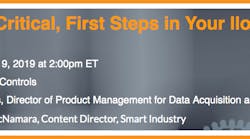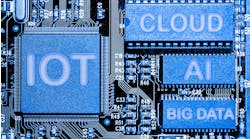Five key elements for effective IIoT implementation
By Colin Geis, Red Lion Controls’ director of product management data acquisition and IIoT technologies
Many of today’s organizations are eager to implement connected factory, Industry 4.0 and/or IIoT concepts to realize benefits, such as reduced operational costs and better visibility and control. While it is, however, unrealistic and cost-prohibitive for most organizations to construct greenfield facilities or “rip-and-replace” legacy equipment, many solutions utilize existing equipment and allow components to be strategically deployed to extend monitoring and control capabilities without impacting day-to-day operations.
When updating a facility, it is important that expectations be set early. Despite the vision of an IP address for every piece of equipment in a network, the reality is end users will not be able to log into every panel meter, water pump and drive from mobile devices. Bringing a facility into the 21st century involves several core fundamentals to help ensure a smooth transition and provide the ability to access, monitor and control information from anywhere.
The first step when devising an effective implementation strategy should revolve around an organization’s operational environment and the devices, applications and processes that make it up. Before plans are put into action, organizations should consider the following five key elements.
Legacy equipment
Take inventory of the devices and equipment across the network. How old are they? Do they need to be replaced or upgraded? Is legacy equipment going to be able to communicate with newer equipment? How much time and money will this take? What cost-effective solutions can address this infrastructure?
Along with the equipment, what protocols are being used by networked devices? How many are in use? Do they need to be converted in order to get the devices to communicate with others in the same environment? What type of media cabling is being used across locations? Fiber-optic cable? Serial (RS-232/422/485)? USB? Copper?
Location/environment
Where is the facility located? If equipment is in a remote location, can each device be monitored via cellular networks? Are 4G/LTE or 3G networks available to reach the site? If not, are broadband or fiber-based networks available? Also, within the building itself, what is the overall environment? Hot and dusty, or at a controlled temperature? Lots of vibration? Are there flammable gases? Is industrial-grade equipment that is designed with wide environmental ratings and industry certifications being used?
Security
According to a recent Business Insider Intelligence survey, 39% of executive respondents indicated that privacy and security are the most significant barriers to IoT investment. Security was the most commonly cited concern among respondents. While this survey applies to all items in IoT, security should be an important concern for IIoT as well. How can sensitive data be protected when it is collected and transferred? What security measures are in place for the systems that collect, monitor, process and store IIoT data? Are there any regulations regarding the protection of data and information?
Staff
As more technology-based devices are added to the network, is the right IT staff on hand? Are other employees who are tech savvy available to help with installation and monitoring? Is software or remote monitoring needed to keep tabs on devices in other locations? Once these key elements are assessed and questions answered, organizations should take steps to:
- Enable communication between devices
- Ensure operational efficiencies across the infrastructure
- Provide a secure platform for device communication





